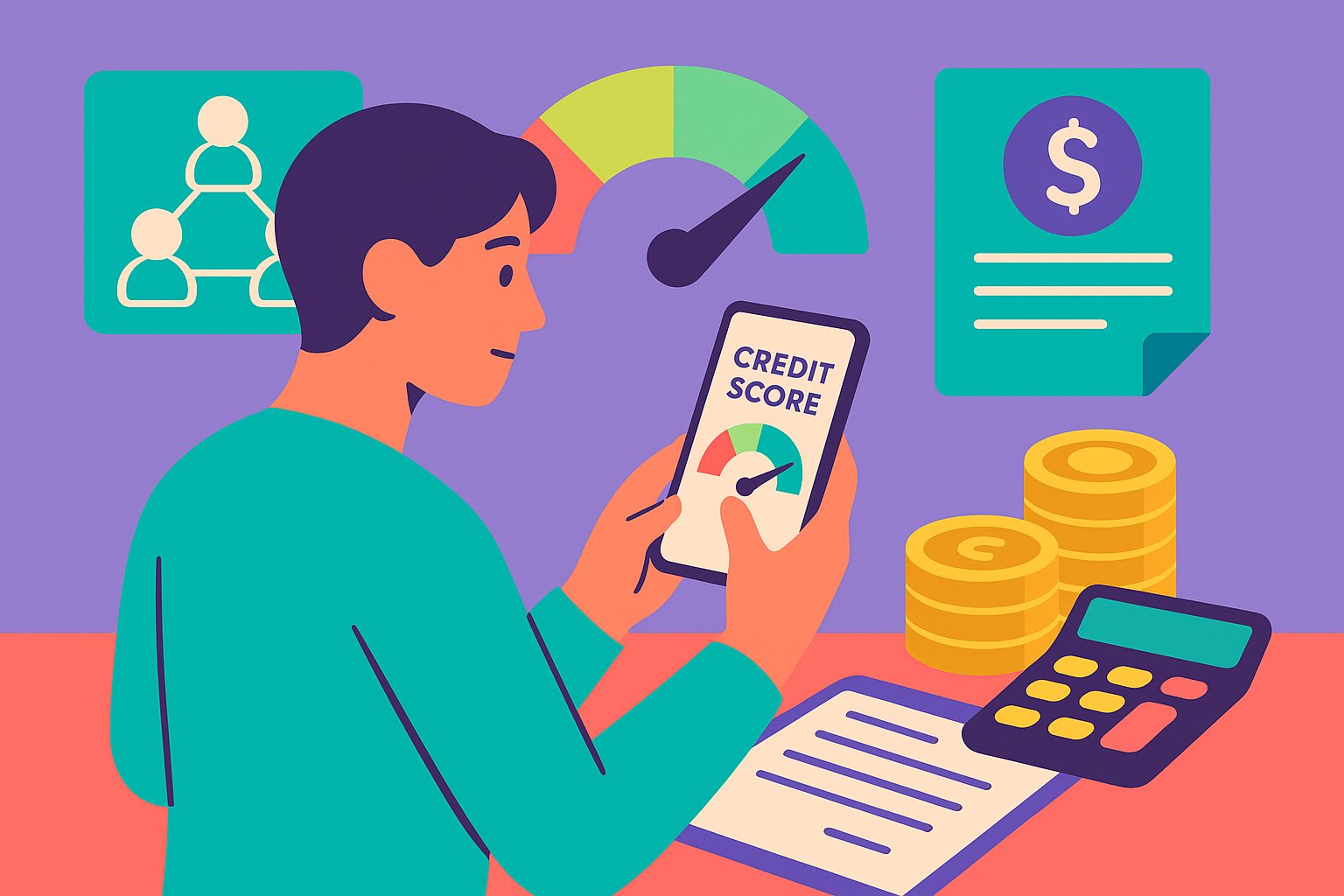Embracing the Power of Debt Crowdfunding for Steady Revenue
In an era where traditional investment avenues often yield modest returns or demand significant capital, debt crowdfunding platforms have emerged as a compelling alternative for individuals seeking reliable passive income. By connecting investors directly with borrowers—ranging from small businesses seeking expansion loans to real estate developers funding property ventures—these platforms democratize lending. Through a straightforward online interface, everyday investors can allocate funds to diverse projects, earning interest payments over time without the daily hustle of managing rental properties or stock market portfolios. This article delves into the mechanics of debt crowdfunding, presents strategies for maximizing earnings, and explores how careful planning can turn modest contributions into a self-sustaining income stream. Whether you are a seasoned investor looking to diversify or a newcomer exploring accessible options, understanding how to harness debt-based crowdfunding can transform your financial outlook.
Grasping the Fundamentals of Debt Crowdfunding
Debt crowdfunding, often referred to as peer-to-peer lending or marketplace lending, operates by allowing borrowers to request loans directly from individual investors rather than traditional financial institutions. On these platforms, borrowers present their credit profiles or project plans, while investors can review risk assessments, interest rates, and repayment schedules before choosing where to place their funds. Unlike equity crowdfunding—where supporters receive partial ownership—debt crowdfunding positions investors as creditors who expect periodic interest payments and eventual principal return. The streamlined digital infrastructure of these platforms automates loan origination, payment processing, and reporting, significantly reducing administrative burdens for individual lenders. By participating in debt crowdfunding, investors access credit opportunities that were once limited to banks, venture capitalists, or accredited individuals, making it an increasingly attractive means to generate passive yield.
Appreciating the Benefits of a Passive Income Model
One of the most alluring aspects of debt crowdfunding is its potential to produce consistent, passive cash flow. As borrowers make monthly payments—including both principal and interest—investors receive a steady stream of income without actively managing each loan. This contrasts with dividend stocks that may fluctuate in payout frequency or real estate investments that require hands-on property management. By diversifying investments across multiple loan types and risk grades, individuals can smooth out the variability inherent in any single borrower default. Furthermore, many debt crowdfunding platforms provide automated reinvestment features, allowing earned interest to be deployed into new loans without manual intervention. Over time, compounding returns can accelerate portfolio growth, though it remains crucial to maintain vigilance regarding platform fees and borrower performance. Ultimately, the potential to earn reliable interest payments—paired with the convenience of digital automation—makes debt crowdfunding an excellent vehicle for cultivating passive revenue.
Selecting the Right Debt Crowdfunding Platform
A critical decision in building a passive income stream via debt crowdfunding lies in choosing a suitable platform. Several prominent players dominate the landscape, each with distinct features, fee structures, borrower profiles, and risk assessment methodologies. Prospective investors should evaluate factors such as historical default rates, loan grading systems, borrower verification processes, and customer support quality. Platforms that provide comprehensive analytics—detailing loan vintage performance, sector breakdowns, and borrower geographic data—can empower lenders to make informed decisions. Additionally, integration with automated investment tools simplifies portfolio management by allowing investors to set preferences for loan terms, credit grades, and interest rate thresholds. Before committing capital, it is wise to explore user reviews, regulatory compliance standing, and any secondary market available for trading loan notes. Selecting a reputable platform with transparent operations lays the groundwork for sustainable, low-hassle passive income generation.
Conducting Thorough Risk Assessment and Due Diligence
While debt crowdfunding offers appealing yields, it is not without risk. Borrower defaults, macroeconomic downturns, and regulatory shifts can all impact loan performance. To mitigate these challenges, investors must adopt a disciplined approach to risk assessment. Start by examining the platform’s borrower vetting processes: Does the platform employ credit checks, income verification, or collateral requirements? Next, review historical default rates across different loan grades and economic cycles. Understanding how a platform’s underwriting models fare during recessions or interest rate spikes can inform diversification strategies. In addition, consider geographic exposure; lending to borrowers concentrated in a region heavily dependent on a single industry can elevate risk. It is also vital to identify any platform-specific safeguards—such as reserve funds or buyback guarantees—that could cushion investors against losses. Maintaining a risk-aware mindset and conducting periodic portfolio reviews ensures that potential pitfalls are identified early and addressed proactively.
Building a Diversified Lending Portfolio for Stability
Diversification stands as a fundamental pillar in reducing volatility and safeguarding against isolated borrower defaults. By spreading capital across multiple loans—varying both in credit grade and sector—investors can minimize the impact of individual failures. Rather than allocating sizable amounts to a handful of high-yield, subprime borrowers, consider balancing your portfolio with a mix of prime borrowers and moderate-yield opportunities. For example, small business loans in consumer-driven sectors may offer modest returns with relatively low default risk, while real estate bridge loans can yield higher interest but carry additional collateral and market fluctuation concerns. Additionally, staggering loan maturities can help manage cash flow; as shorter-term loans complete, reinvest the proceeds into new opportunities without being locked into long-term commitments. Aim for at least 30 to 50 different loans to achieve meaningful diversification. Over time, this diversified approach can smooth returns, ensuring that occasional defaults do not derail overall passive income objectives.
Emphasizing Automated Reinvestment to Accelerate Growth
One of the most potent features of debt crowdfunding platforms is the ability to automate the reinvestment of principal and interest as it becomes available. Automated reinvestment—or “auto-invest”—allows investors to define specific criteria, such as minimum interest rate thresholds, preferred loan terms, and acceptable credit grades. Once configured, the platform’s algorithm allocates newly available funds into loans that match these parameters, eliminating the need for continual manual intervention. Leveraging auto-invest functionality not only saves time but also harnesses the power of compounding returns, as interest earned on existing loans is immediately put to work in new opportunities. To optimize this strategy, periodically review and adjust auto-invest settings based on evolving market conditions—such as shifts in prevailing interest rates or changes in economic outlook. By fine-tuning automated reinvestment preferences, passive income seekers can cultivate a robust portfolio that grows organically over time.
Assessing Fee Structures and Their Impact on Net Returns
While platforms facilitate seamless lending interactions, they typically charge fees that can affect overall return rates. These charges may take the form of origination fees deducted from borrower proceeds, servicing fees applied to investor earnings, or withdrawal fees imposed on fund transfers. Carefully reviewing each platform’s fee schedule is crucial; a seemingly small percentage can compound over multiple loan cycles, eroding long-term profitability. For instance, a platform that charges a 1% servicing fee on interest payments might significantly reduce the net yield if invested in lower-yield, corporate-grade loans. Conversely, a platform with higher nominal fees but superior borrower credit quality might offer a healthier risk-adjusted return. When comparing platforms, calculate projected net returns after fees, factoring in historical default rates and reinvestment frequency. By prioritizing transparent fee disclosures and understanding how platform charges influence passive income projections, investors can make strategic choices that align with their financial goals.
Navigating Tax Considerations for Debt Crowdfunding Income
Income derived from debt crowdfunding—primarily interest payments—typically counts as ordinary taxable income in the year received. It is essential to maintain detailed records of interest earnings, loan defaults, and any fees paid to platforms. Many debt crowdfunding platforms provide annual tax statements that summarize interest income, making it easier to report earnings on Schedule B of Form 1040. If you hold loans through a trust or an entity subject to different tax rules, consult a tax professional to determine appropriate reporting requirements. In the event of borrower default, you may be eligible to deduct the principal loss as a capital loss, subject to IRS rules on the deductibility of bad debts. Furthermore, international investors should be mindful of cross-border tax treaties and potential withholding requirements. Accelerating passive income growth through compounding can increase tax liabilities, especially if held outside tax-advantaged accounts. As such, structuring debt crowdfunding investments within IRAs or other retirement vehicles can offer tax deferral benefits, further amplifying long-term portfolio growth.
Recognizing and Mitigating Common Pitfalls
Even seasoned investors can fall prey to pitfalls within the debt crowdfunding landscape. One common mistake is over-concentration in a single credit tier or borrower category, which exposes the portfolio to greater default risk if that segment experiences a downturn. Another pitfall involves neglecting to adjust auto-invest settings as economic conditions change; for instance, rising interest rates may make it prudent to seek higher-yielding loans, while economic uncertainty might warrant a shift toward more prime-grade borrowers. Additionally, lenders sometimes overlook platform liquidity; while some platforms offer secondary markets for trading loan notes, others require investors to hold loans through maturity, potentially trapping capital during cash flow crunches. To counter these risks, maintain regular portfolio health checks, reevaluate loan selection criteria every quarter, and allocate a portion of funds to liquid, lower-risk loans. By staying vigilant about emerging risks and avoiding reactive, emotion-driven decisions, investors can preserve their passive income trajectory and weather market fluctuations effectively.
Scaling Your Lending Strategy Responsibly
As passive income begins to materialize and compounding accelerates portfolio size, it becomes tempting to allocate larger sums into debt crowdfunding. While scaling up can magnify earnings, it also introduces operational and concentration risks. To ensure responsible growth, consider implementing a tiered approach: allocate a set percentage of your overall investment portfolio to debt crowdfunding—such as 10 to 20 percent—while keeping the balance in more liquid, traditional assets like index funds or cash equivalents. This balance allows you to maintain liquidity for unexpected expenses and market opportunities. If you choose to reinvest earnings beyond an initial threshold, explore diversifying into multiple platforms to spread platform-specific risk. Similarly, diversifying across loan types—consumer, small business, and real estate—can help smooth returns. As your exposure grows, periodically liaise with a financial advisor to review asset allocation, ensuring that debt crowdfunding remains a strategically aligned component rather than an outsized bet.
Fostering Community Impact Through Your Lending Choices
One of the more fulfilling aspects of debt crowdfunding is witnessing the tangible impact of your investments. Unlike purely financial instruments, many loans on debt crowdfunding platforms directly support entrepreneurs, community projects, or sustainable real estate developments. By studying borrower profiles, you can align your lending with personal values—whether that involves supporting women-owned businesses, eco-friendly real estate rehabilitation, or local small shops revitalizing urban neighborhoods. This dual benefit—earning interest while fostering positive social outcomes—adds an emotional dimension to passive income. To amplify this impact, regularly review platform updates highlighting success stories: perhaps a borrower used funds to expand operations, hire employees, or reduce carbon footprints. Sharing these narratives within your personal network not only enhances your sense of purpose but may also introduce like-minded individuals to debt crowdfunding. Over time, curating a portfolio that reflects both financial prudence and social responsibility cultivates a deeper connection to your investments.
Anticipating Future Trends in Debt Crowdfunding
The debt crowdfunding sector is dynamic, continually shaped by technological innovations, regulatory changes, and evolving investor preferences. Artificial intelligence and machine learning are increasingly applied to borrower underwriting, promising more accurate credit assessments and potentially lower default rates. In parallel, decentralized finance (DeFi) protocols may usher in peer-to-peer lending models that operate without centralized intermediaries, potentially reducing fees and increasing transparency. Regulation also looms large: as larger institutional players begin to participate, jurisdictions are likely to refine frameworks to protect retail investors without stifling innovation. Moreover, ESG (Environmental, Social, and Governance) criteria are gaining prominence, prompting platforms to introduce impact-focused loan categories. By keeping an eye on these emerging trends—whether through platform newsletters, industry conferences, or financial news outlets—investors can position themselves advantageously. Adapting lending strategies proactively to leverage new features or regulatory developments ensures that debt crowdfunding remains a resilient avenue for passive earnings.
Crafting a Resilient Path to Reliable Returns
Building genuine passive income through debt crowdfunding is not an overnight endeavor. It demands careful platform selection, disciplined diversification, strategic reinvestment, and an ongoing commitment to risk management. Yet, for those willing to invest the necessary time—at the outset—to master the landscape, the rewards can be substantial. Each loan funded becomes a building block in a steadily expanding revenue stream, bringing the dual satisfaction of yielding financial returns while fueling borrower aspirations. By coupling data-driven analysis with a diversified lending approach, passive income seekers can navigate the inevitable ups and downs of credit markets and economic cycles. Remember, resilience arises from careful preparation, continuous learning, and measured growth. As you see interest payments accumulate in your account, you may find that debt crowdfunding not only bolsters your financial independence but also enriches your understanding of how capital can catalyze real-world progress.
Charting Your Debt Crowdfunding Journey
Embarking on a debt crowdfunding adventure begins with a simple step: creating an account on a reputable platform, exploring loan listings, and committing a modest initial sum to test the waters. From there, your learning curve accelerates as you refine risk criteria, adjust portfolio allocations, and discover the nuances of borrower behavior. Over time, the automated reinvestment of interest and principal becomes a powerful engine, continuously channeling funds into new opportunities and fueling a compounding cycle of returns. To keep that engine running smoothly, remain vigilant about emerging trends, platform developments, and economic indicators that influence borrower creditworthiness. Periodically reassess your overall asset allocation to ensure that debt crowdfunding continues to occupy a balanced position within your broader financial objectives. By embracing patience and maintaining disciplined strategies, you can cultivate a reliable passive income source—one that not only enhances your own financial well-being but also contributes meaningfully to the entrepreneurial and community-driven projects that define the debt crowdfunding ecosystem.




